Robin Egg Identification (Determine if it’s an American Robin egg in 3 easy steps)
So you’ve found an egg or nest and want to determine the type of eggs. We’ll teach you to identify robin eggs in three easy steps:
- What color is the egg? Robins have sky blue eggs
- Does the egg have any spots or speckles? Robin eggs do not have spots or speckles
- Where is the nest located? Robins nest in trees, bushes, or occasionally on buildings.
Robin egg identification
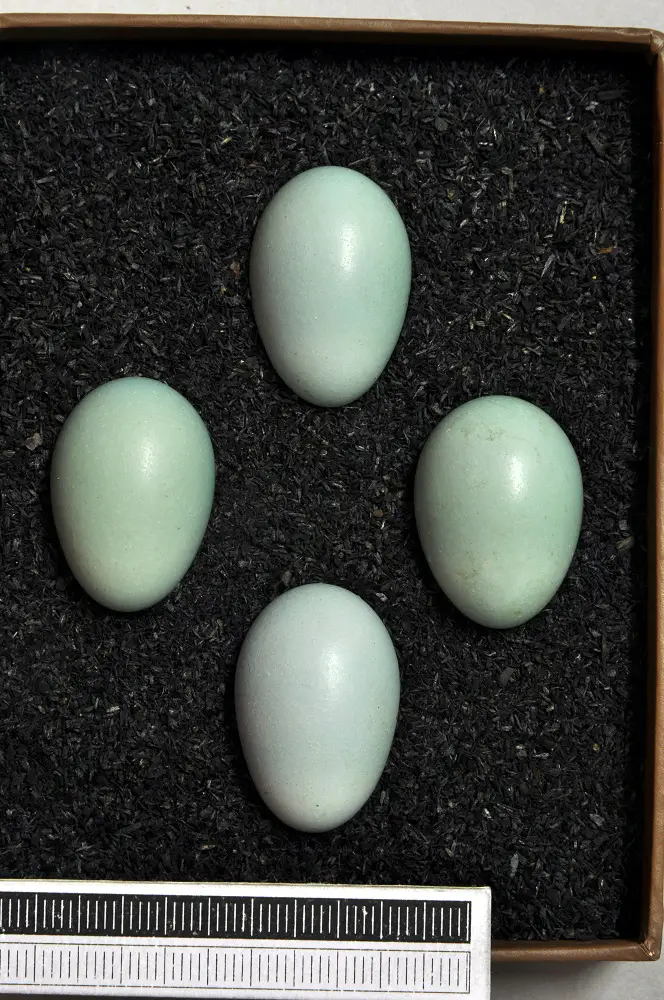
Robins are one of the most commonly sighted birds in the United States. Since they live around people, it’s also common to see their eggs and nests.
Fortunately, identifying robin eggs is straightforward:
What color is the egg?
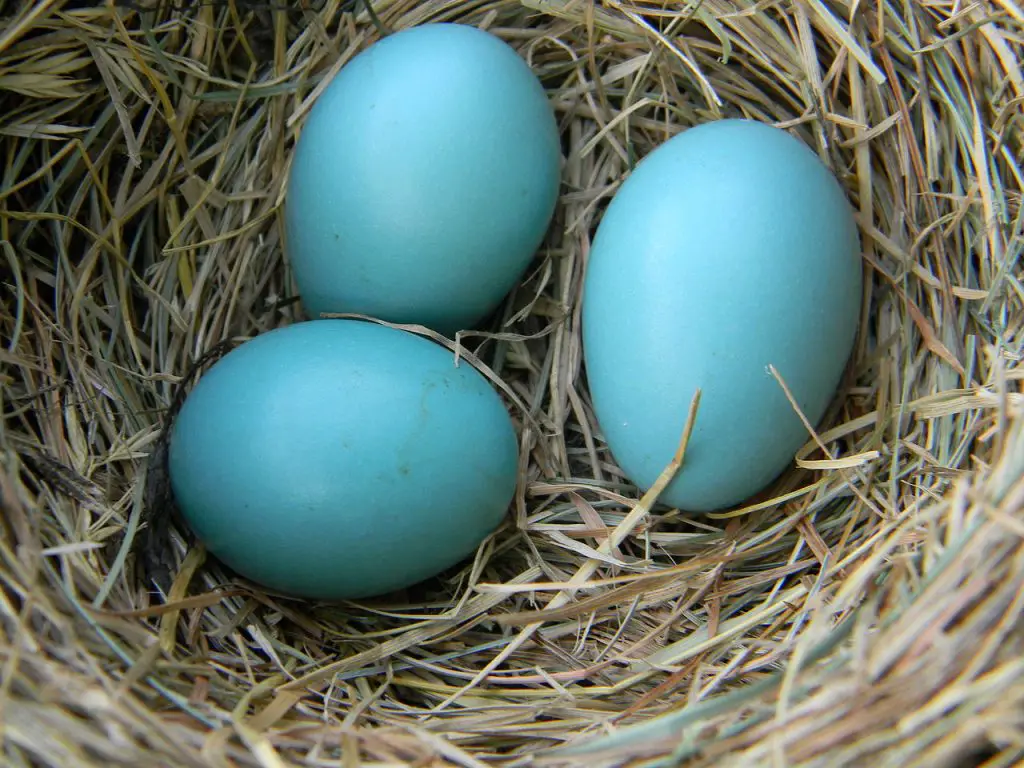
Robin eggs are sky blue. Or as it’s also sometimes called, robin egg blue.
However, other birds also have light blue eggs, so let’s look at other identification hints.
Does the egg have any spots or speckles?
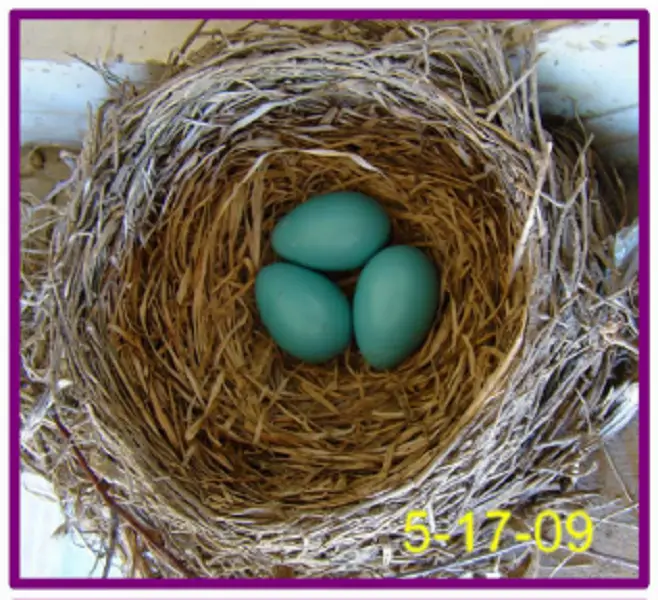
Robins have solid color eggs with no spots or speckles.
However, house sparrows, song sparrows, and redwing blackbirds have blue speckled eggs, and bluejay eggs can be light blue or green with speckles.
Related post: All About Baby Pigeons!
Where is the nest located?
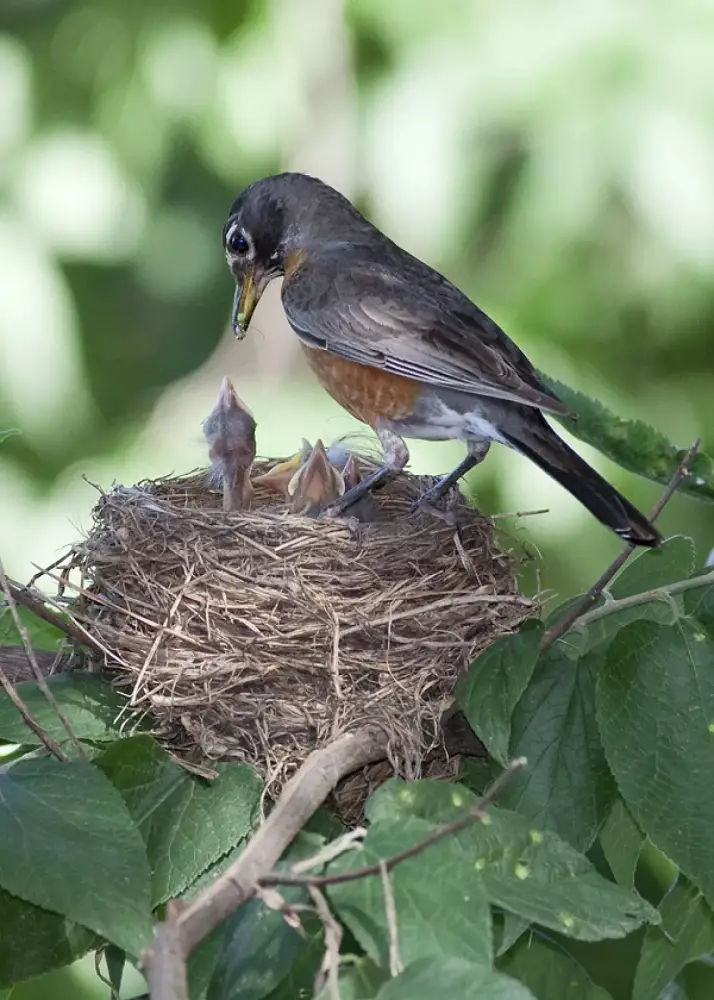
If you’re fortunate enough to see the nest, this may give you another clue a lot the eggs. Robins usually build their nests on horizontal branches of trees or bushes.
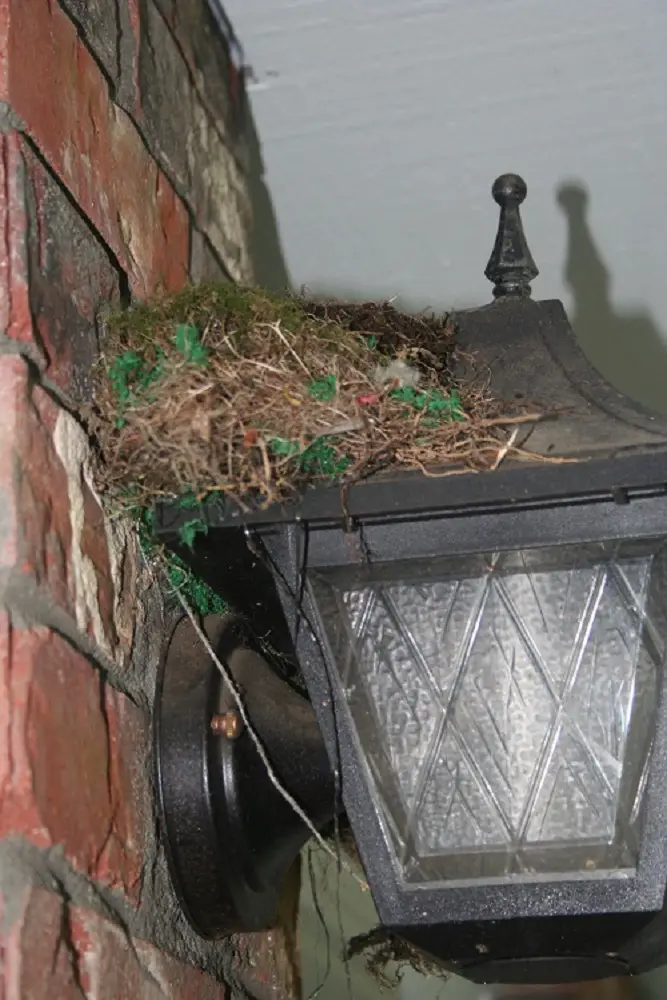
They may also build them on the eaves, gutters, or light fixtures of houses.
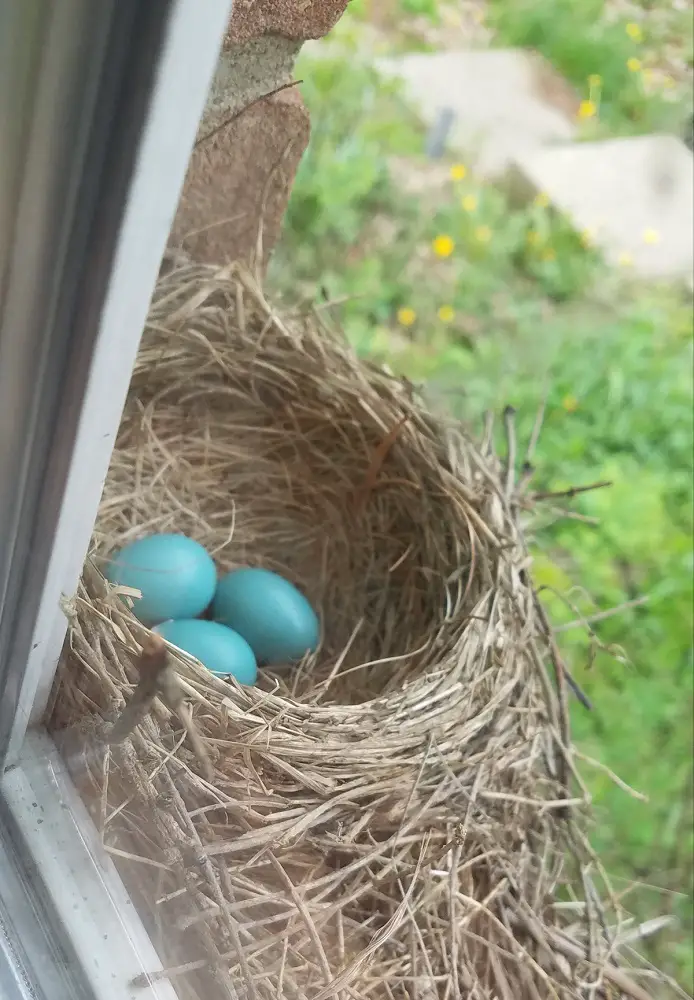
This spring, a robin built her nest on my bedroom window sill!
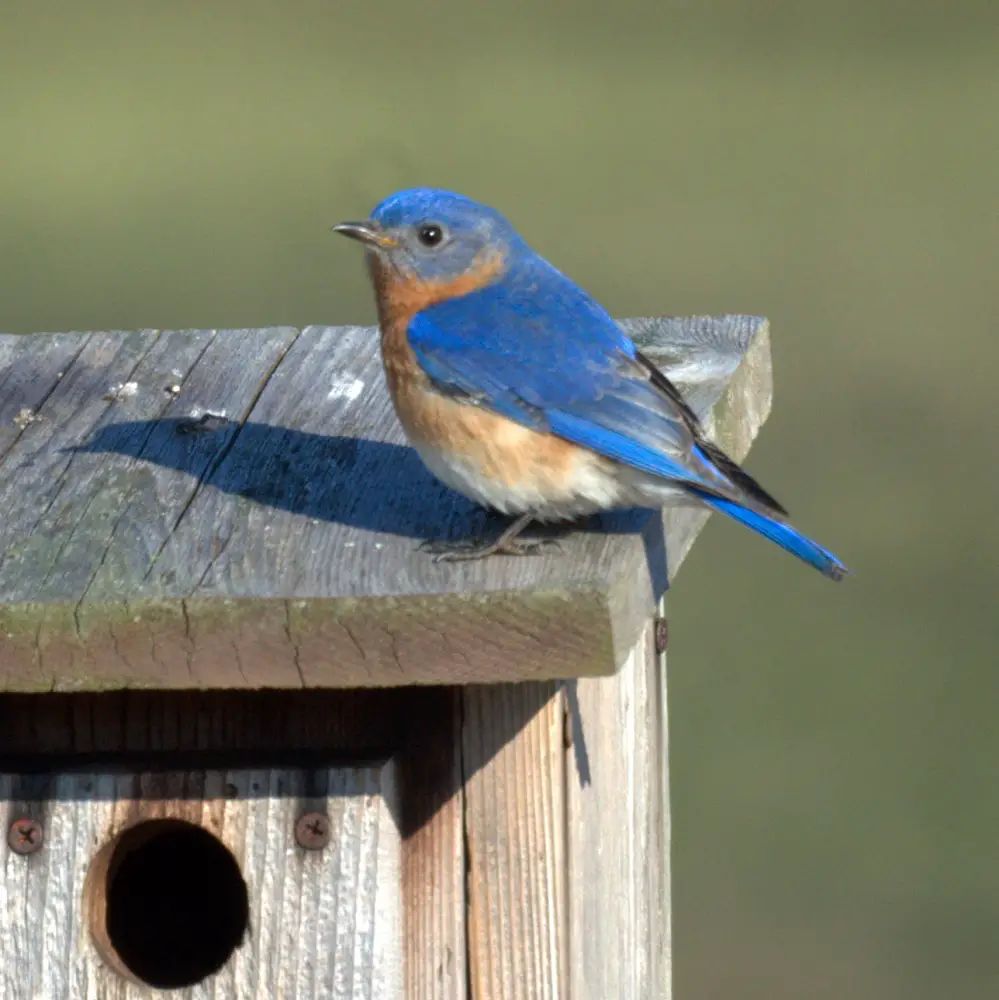
On the other hand, starlings and bluebirds build their nests in cavities. These can be holes in trees or nest boxes.
There you have it- if the nest is in a cavity, it’s probably not a robin egg. If it is in a tree, bush, or a human structure, it likely is a robin egg.
Wanna test your bird knowledge? Take this Red-Tailed Hawk vs Turkey Vulture Quiz
More robin egg identification tips
Want to learn more about robins, their eggs, and nests? Then keep reading to become an expert!
Nest appearance and height
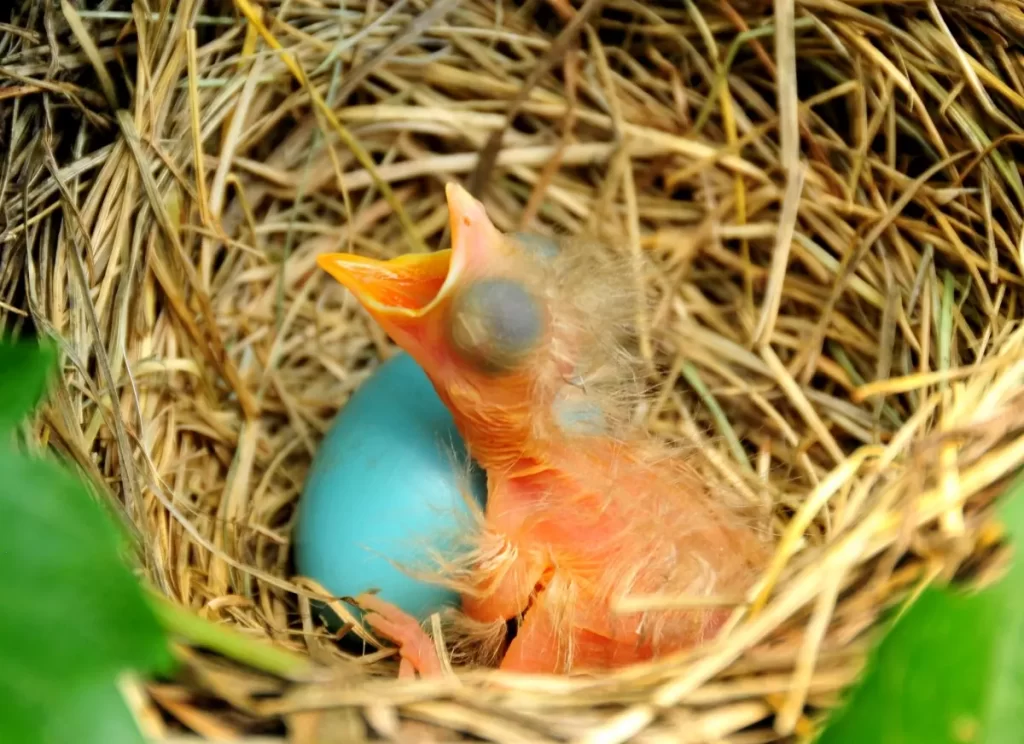
Robins build tidy, cup shaped nests, usually using dry grass and twigs. They line the inside with small pieces of grass. Other nest materials may include paper, feathers, roots, and moss. When finished, a robin’s nest is about 6-8 inches across and 3-6 inches high.
Usually, the nest is 5-15 feet off the ground. However, robins will nest on the ground if there are no other options.
The nest usually contains three to five eggs.
What state are you in?
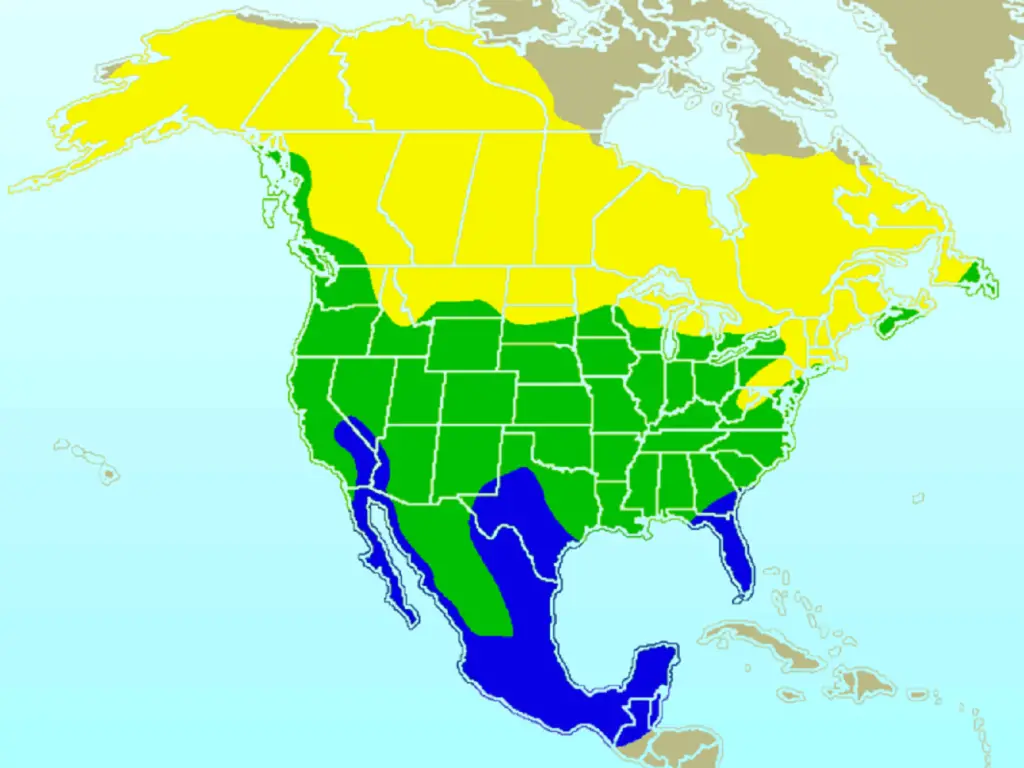
American robins live and breed all across the United States. The yellow indicates their summer range, blue is their winter range, and green is their year- round range.
Unfortunately, starlings and bluebirds also nest all across the US, so this doesn’t really help when identifying robin eggs.
This might pique your interest too: All About Baby Crows!
What time of year is it?
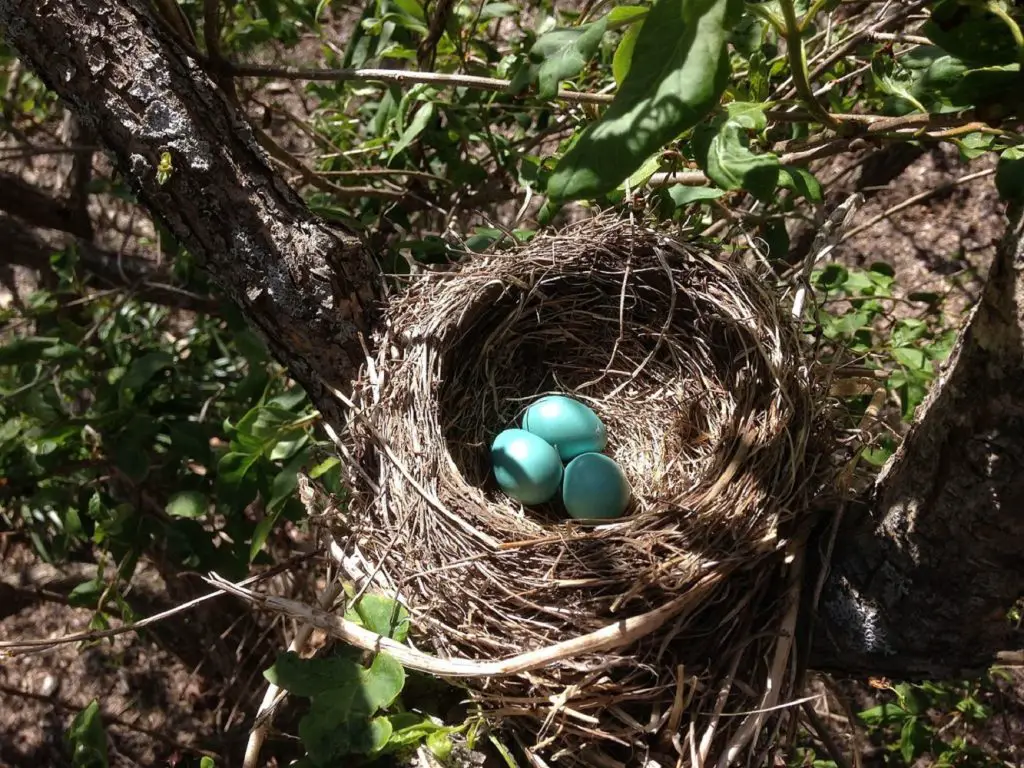
American robins lay their eggs from April to July. Starlings only nest in mid April.
However, bluebirds nest from March to August.
Knowing this timing may help you decide if it’s a robin egg or starling egg.
Robin egg identification chart
Do you feel comfortable using the information in this post to make some kind of infographic? Please let me know if you need more guidance.
Frequently asked questions about identifying robin eggs
How do you identify a robin egg?
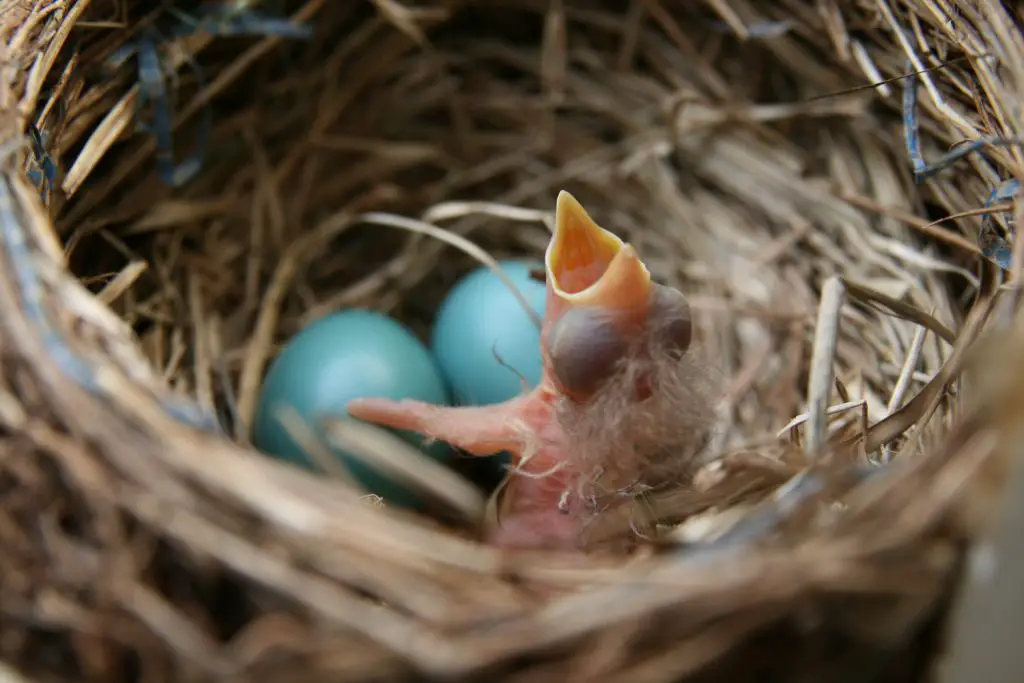
You can identify robin eggs by their light blue color with no speckles, and length of approximately one inch. Other clues include a cup- shaped nest of twigs and bark containing 3-4 eggs, and by seeing adult robins nearby.
Related post: What you need to know about House Finch nesting habits!
What color eggs are robin eggs?
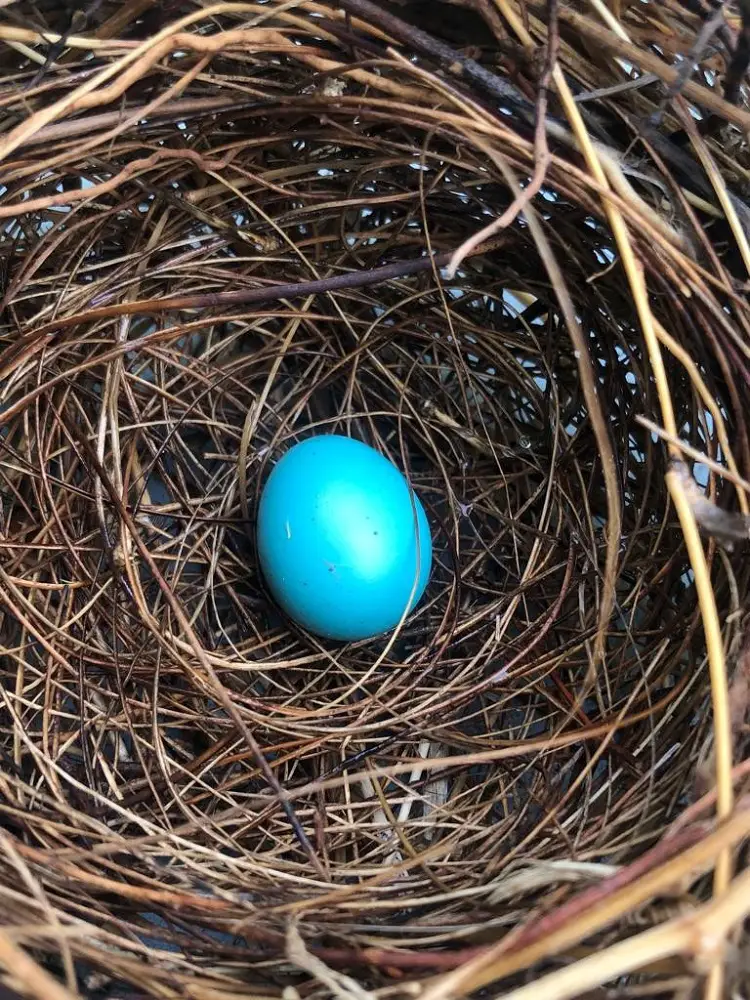
Robin eggs can be sky blue to blue- green in color. They do not have any speckles or spots.
Are robin eggs blue or brown?
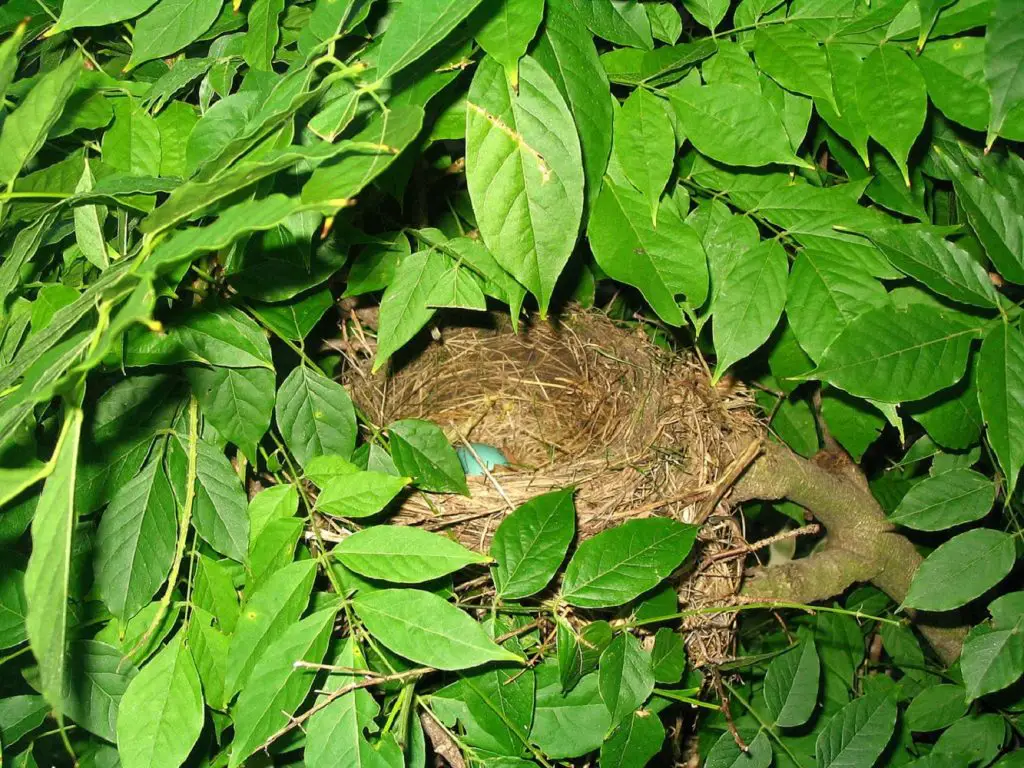
Robin eggs are blue. However, brown headed cowbirds may lay their gray and brown eggs in the nests of robins and other birds.
Related: what should I do if I find different color eggs in a nest?
Are robin eggs the only blue eggs?
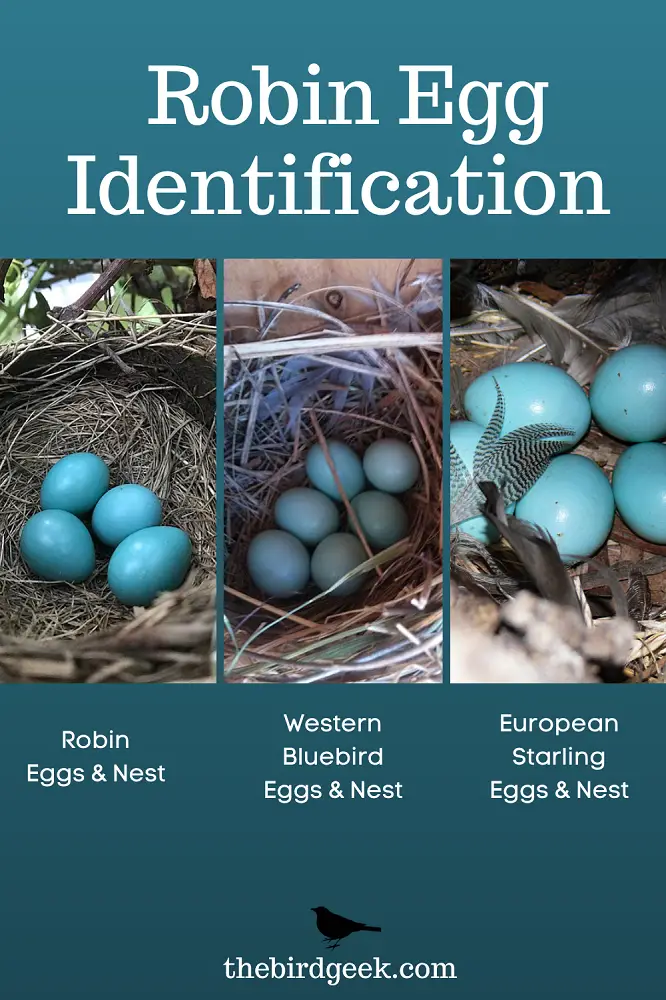
No, robin eggs are not the only blue eggs. Bluebirds and starlings also have blue eggs. Bluebird eggs are slightly smaller and starling eggs are slightly larger, and both prefer to nest in cavities while robins tend to nest on branches of bushes or trees.
Related post: How to recognize Bluebirds from Purple Martins
Wrap up- Robin Egg Identification
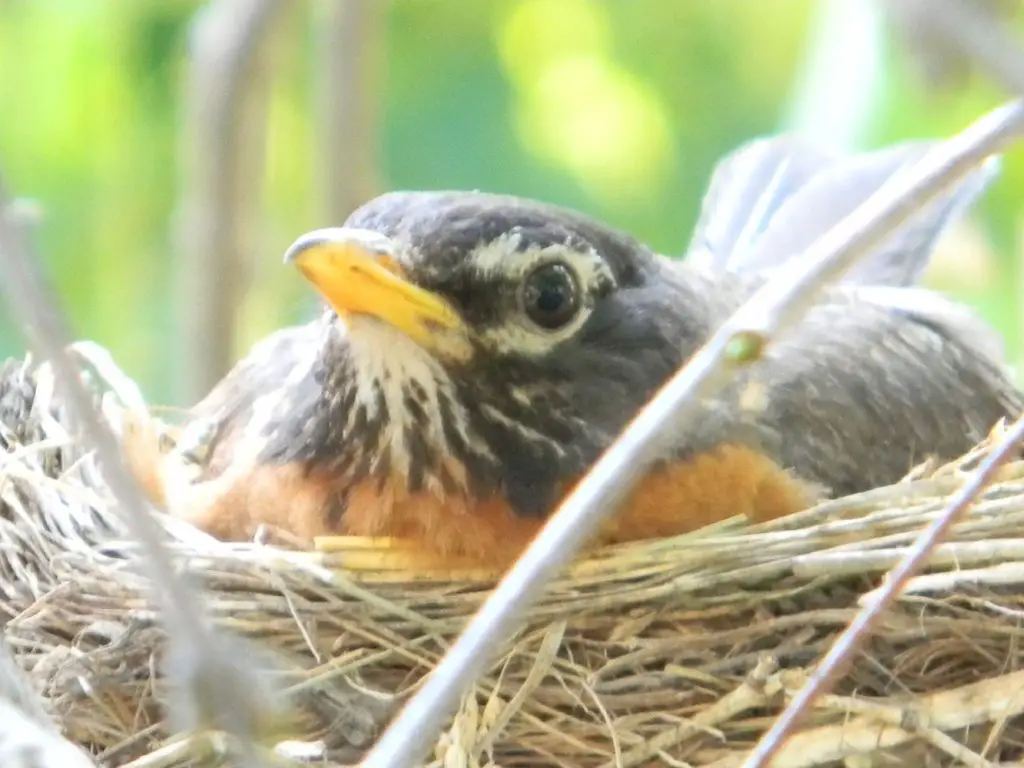
We hope you now feel confident identifying robin eggs and distinguishing them from bluebird and starling eggs! When in doubt, watch the eggs hatch and fledge to see what sort of birds they grow into.
And of course, leave any eggs or baby birds where you find them. This is the easiest way for the parents to continue to care for their young.